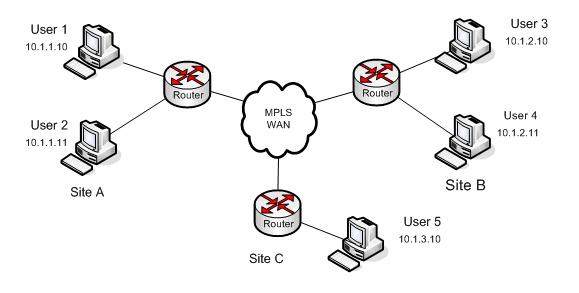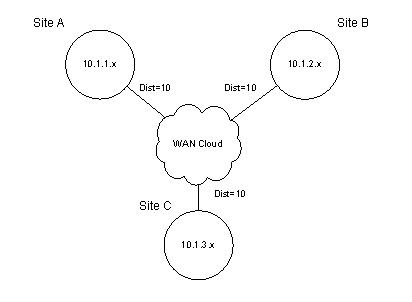Example 2: Clouds
Illustration of a cloud-based network managed by IBM® Sametime® Bandwidth Manager. This example shows how you can model a network containing sites that are connected through any-to-any clouds, rather than dedicated links.
- Coupled with the Distance metric, you can see the actual routes that calls take when there are multiple route possibilities.
- They provide an anchor for describing virtual links if physical link sharing is used at your site.
Many common scenarios involve multiple sites that are connected through any-to-any clouds (for instance, MPLS networks). The following figure shows a scenario where 3 sites are connected through a common MPLS (Multiprotocol Label Switching) network:

Each of the sites is represented in the topology model and is defined by a set of IP ranges. In addition, the MPLS cloud is introduced as a separate network in the topology. The WAN access links in each site are modeled as links between that site and the shared cloud. The resulting topology model looks as follows:

- They do not have any IP ranges associated with them.
- As a result, they cannot have any endpoints associated with them.
- They do not have any bandwidth constraints associated with them.